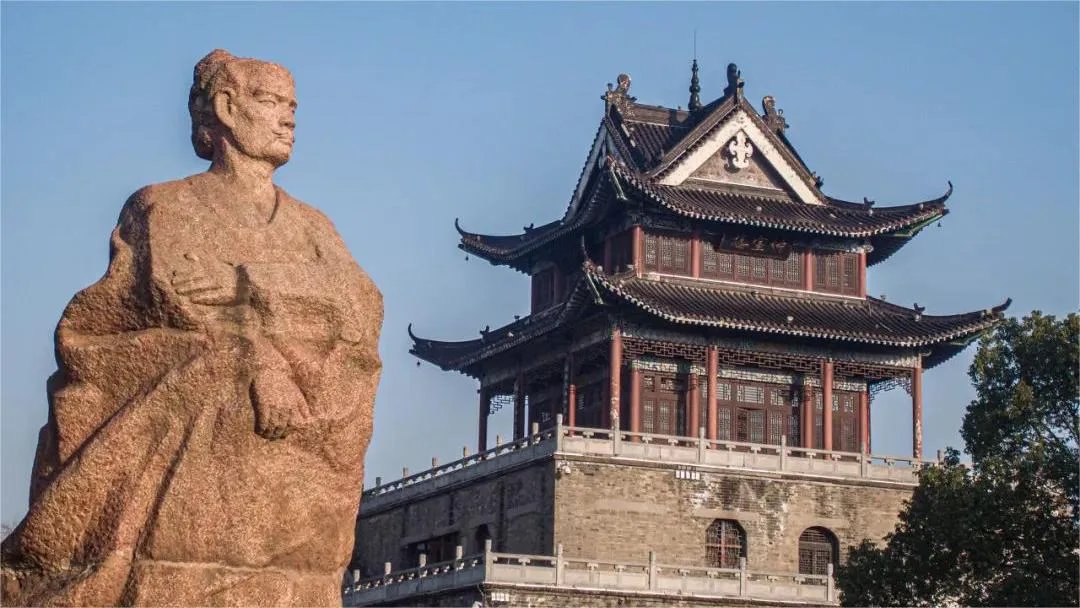Zhongxuan Pavilion (仲宣楼), situated atop the southeastern corner of the Xiangyang Ancient City, was erected in commemoration of the poet Wang Can during the late Eastern Han Dynasty and is also known as Wang Can Pavilion. Standing at a height of 17 meters with a total area of 650 square meters, it comprises three main parts: the city wall, the city platform, and the main building. Alongside the Yellow Crane Tower, Qingchuan Pavilion, and Yueyang Tower, it is collectively hailed as one of the “Four Famous Towers of Chu”.
During the tumultuous late Eastern Han period, amidst frequent warfare, the region of Jingzhou under the governance of Liu Biao enjoyed relative tranquility, attracting numerous literati to seek refuge in Xiangyang. Among them was Wang Can. Despite being from the same hometown and having familial ties with Liu Biao, Wang Can was not politically favored. Disheartened by his unfulfilled aspirations, he often retreated to this pavilion to study and compose poetry, including his renowned work “Fu on Ascending the Tower”.
In the late Ming Dynasty, Xiangyang’s Prefect Zhou Shaoji constructed the pavilion, naming it Zhongxuan Pavilion in reference to Wang Can’s residence in Xiangyang. He commissioned his friend Wang Shizhen to write “Records of Zhongxuan Pavilion”. During the reign of Emperor Yongzheng of the Qing Dynasty, the deputy historian Zhao Hong’en undertook its reconstruction. In the twenty-fifth year of the Qianlong Emperor’s reign, Hu Yi, serving as the prefect, supervised its restoration. Unfortunately, it was destroyed by warfare in the early years of the Republic of China. In 1993, it was reconstructed at its original site.







